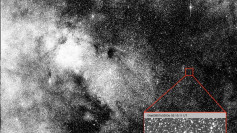The interstellar object known as 3I/ATLAS is drawing heightened public scrutiny as scientists and observers raise questions about its behavior and composition, while theoretical physicist Dr. Michio Kaku accuses NASA of withholding critical data. The object, first detected on July 1, 2025, is only the third confirmed interstellar visitor ever observed entering the Solar System. Its recent loss of a cometary tail after passing the Sun has intensified speculation, prompting calls for greater transparency from the U.S. space agency.
3I/ATLAS was identified by the Asteroid Terrestrial-impact Last Alert System, gaining the "3I" classification assigned exclusively to interstellar objects. Scientists initially believed the object followed expected cometary behavior as it approached perihelion, but new observations indicate that the tail dissipated after its closest approach to the Sun. Such behavior is extremely rare for a natural comet, creating debate among astronomers about whether the object may possess unique chemical or structural attributes.
Dr. Michio Kaku publicly criticized NASA's handling of the recent observations. He stated, "This isn't something that needs to be classified," arguing that newly captured images of 3I/ATLAS should be released for independent review. His comments have amplified existing concerns among researchers who say the lack of updated imaging leaves the scientific community reliant on speculation.
Kaku pointed to additional scientific anomalies associated with the object, including estimates that place its age at roughly 7 billion years-older than the 4.6-billion-year age of the Solar System. He also emphasized reports of the object's "unusually high nickel content," suggesting that the material composition may indicate origins "far older and tougher" than typical cometary bodies formed near the Sun.
These characteristics have fueled a more controversial line of inquiry. While Kaku noted that an "extraterrestrial origin remains highly unlikely," he acknowledged that some researchers are not prepared to dismiss the possibility. He highlighted Harvard astrophysicist Dr. Avi Loeb, stating that Loeb "hasn't ruled it out completely" when evaluating whether 3I/ATLAS could represent a manufactured probe or remnant of ancient technology.
Dr. Kaku also criticized NASA for delaying the release of Mars Reconnaissance Orbiter images from October 2, warning that "unnecessary secrecy only fuels conspiracy theories." The agency has not publicly commented on the timing of image releases or the status of additional data review.
As 3I/ATLAS continues its trajectory out of the inner Solar System, the uncertainty surrounding its nature remains unresolved, with scientific curiosity now entwined with questions of transparency.



